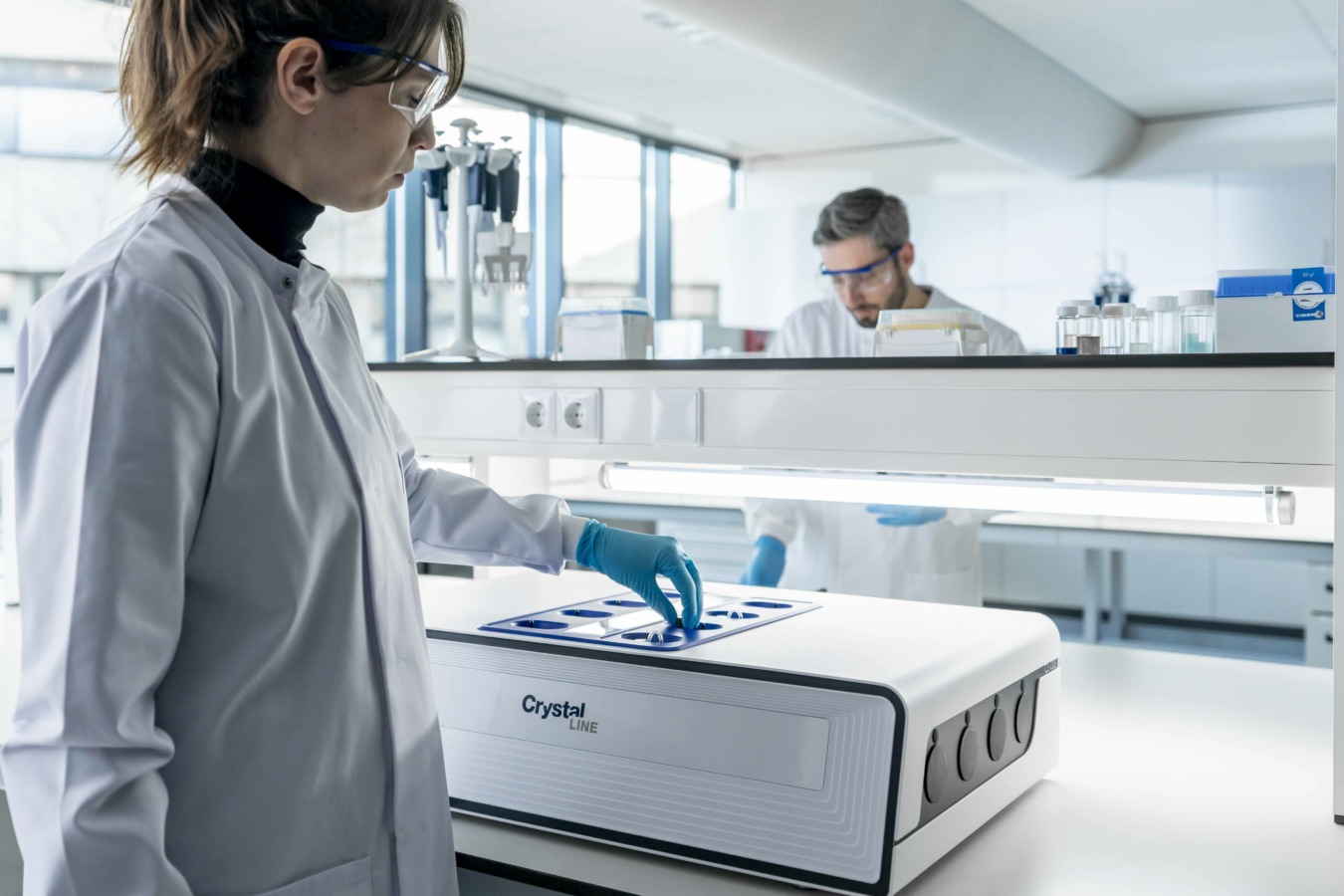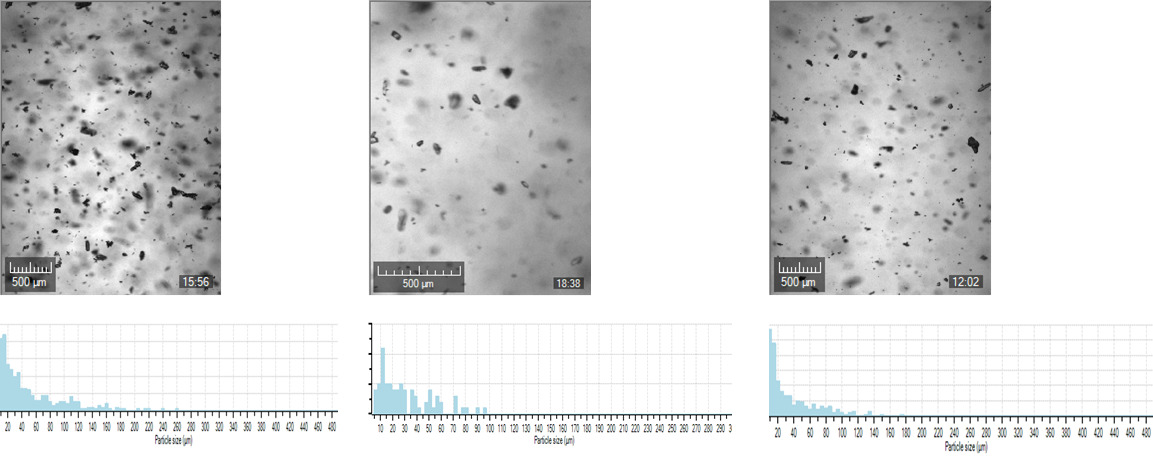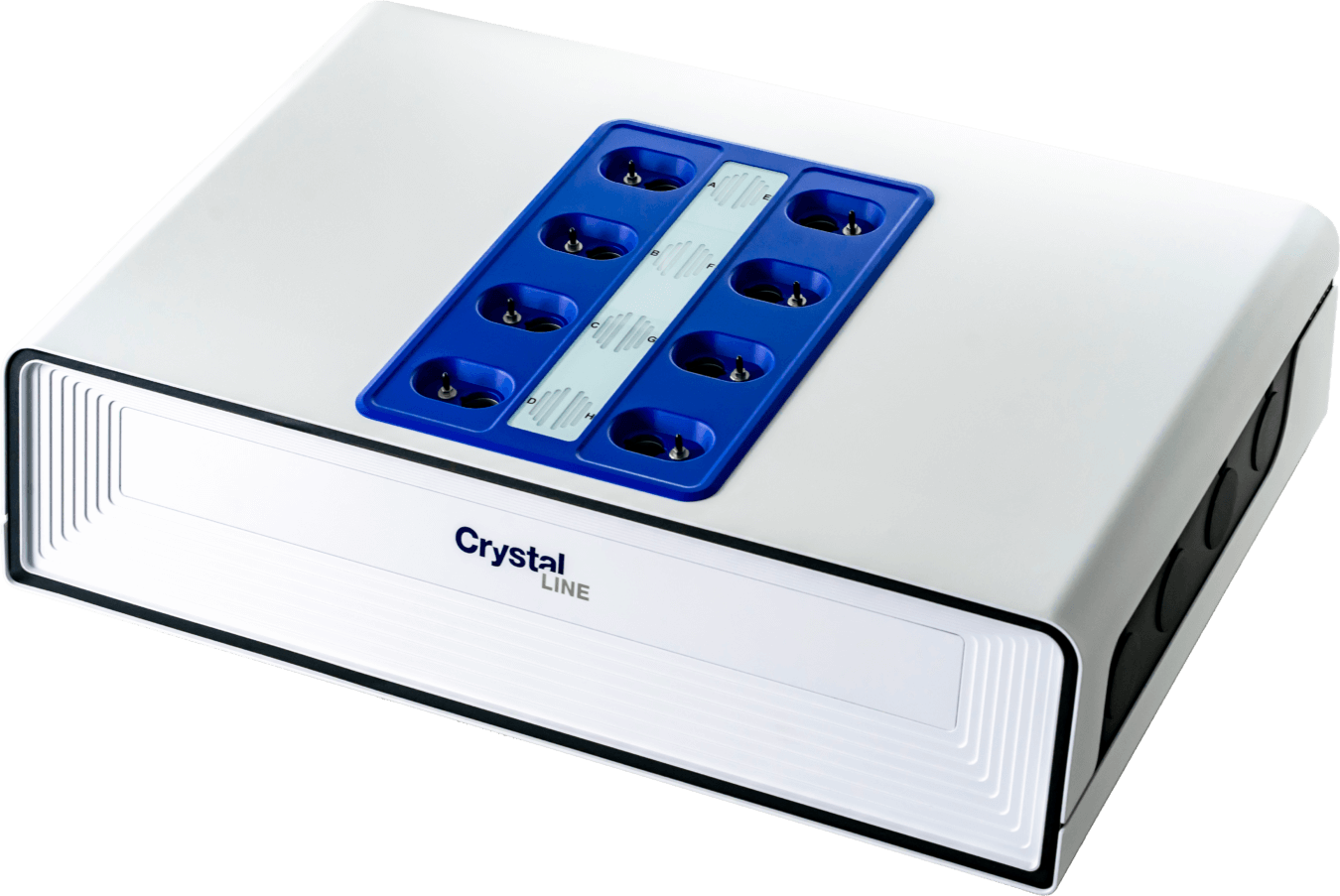The Crystalline PV combines temperature and turbidity measurements with real time particle imaging. With four or eight high quality digital visualization probes, seeing what is happening in the vial has never been easier: no moving parts, no cumbersome insertion probes. The Crystalline system also has the added measurement capabilities of particle visualization and provides a number-based representation of the particle size distribution (PSD).
Particle size distribution of an active ingredient is important for both downstream processing operations and in vivo performance. Crystallization process parameters and reactor configuration are directly influencing the particle size distribution of an active ingredient (Engstrom et al). There are many parameters influencing the PSD, to which we need to add the scale-dependence of many of these parameters. Therefore, designing a scalable crystallization process that delivers a target PSD can be a challenging task. Quite some time ago, Mersmann and Kind summarized all these parameters and classified them in two main groups: physical and chemical properties of the solution and solid; geometry and operating conditions of the crystallizer.

The Crystalline instrument in action
Brown and Mitchell noted back in 2017, that the Crystalline system with the real time imaging offers the measurement capabilities of particle visualization by providing a number-based representation of the particle size distribution (PSD). Brown and Mitchell noted back in 2017, that in-situ sizing via image analysis with the Crystalline has an added value compared to offline PSD measurements (such as laser diffraction) by avoiding issues prone to appear due to sampling. In addition, the in-situ image analysis capabilities can be enormously beneficial in terms of aiding process understanding, providing crucial information for crystallization mechanism and model discrimination activities. Without inserting probes into the reaction vessel, cross contamination and interference in the crystallization environment are avoided. Additionally, the Raman module of the Crystalline aids monitoring the concentration and solid form. All these techniques are integrated into a small reactor with overhead stirring and refluxing capabilities, which can qualitatively mimic the likely vessel configurations at larger scales.

There are several publications where the use of the PSD analysis done with the Crystalline instrument is applied to different topics. Erik Temmel from Max Plank Institute Magdeburg together with Claudia Engelmann and Udo Kragl measured the PSD of environmentally friendly microencapsulated enzymes. They were able to prove the greater advantage for their method for enzyme immobilization as they were able to assess the mean size of the microparticles and the average size with PSD measurement on the Crystalline instrument.
Brown et al showed in 2018 how the bulk crystal growth rates can be determined by making use of the in-situ images of particles recorded with the Crystalline instrument. Raw PSD data obtained from the image analysis was used to produce a volume weighted distribution and further growth rates were determined. This work is part of the successful application of the workflow proposed by Brown et al for rapid design of processes to produce kilo quantities of their product with specific attributes.
Nguyen et al were able to detect the polythermal dissolution temperature of paracetamol by making use of the transmissivity technology and camera module of the Crystalline. By identifying the clear point at which dissolution has occurred, the dissolution temperature profile can be easily assessed with the Crystalline. The authors determined the clear point by using both the transmissivity measurement and examining images from the Crystalline camera. Further, the authors mention that the dissolution kinetics depend on the size and shape of the crystals dissolving and their ability to impede the passage of light (transmissivity) or to be clearly resolved in an image (camera-based measurement).

The Crystalline instrument
Curious to learn more?
Discover the Crystalline instrument and access crystallization and formulation information at mL scale.